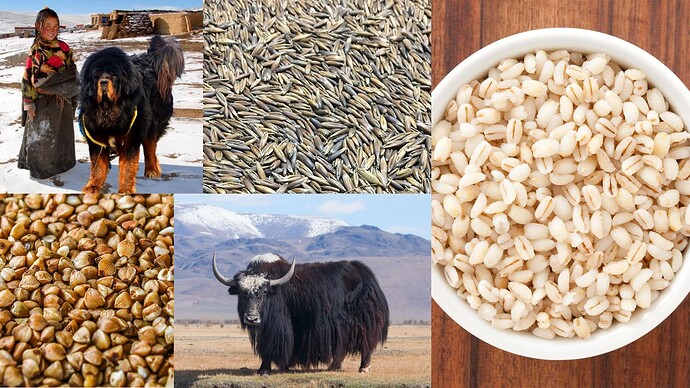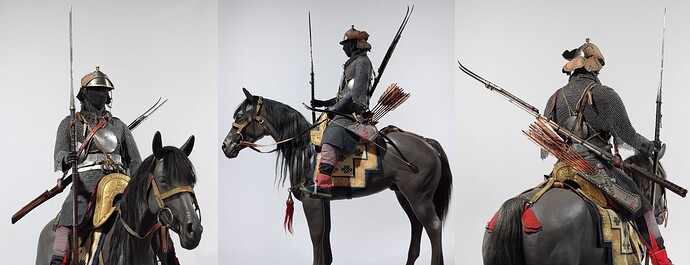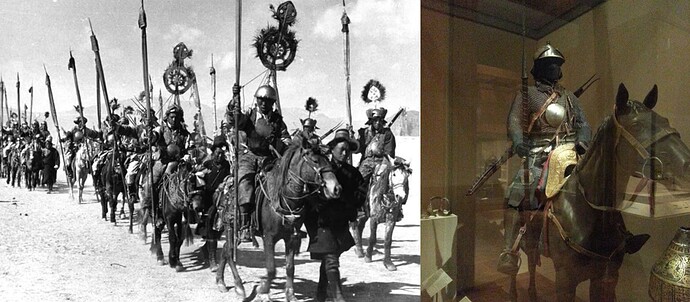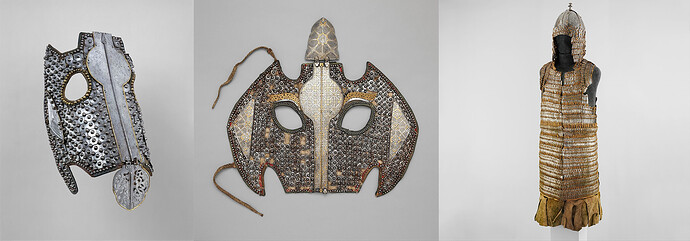First of all, I don’t speak neither English nor Tibetan as my native language. So please bear with me if I make any grammar or puctuation mistakes.
This is just a conceptual suggestion, that’s why the thread will only address bonuses, unique units and techs. Specific bonus values and the tech tree can always be tweaked for balance later.
The Tibetans
Why the Tibetan empire?
-The tibetan empire is one of the most important empires in the history of asia and world history.
-Tibetan history is interesting enough to be part of Age of empires II.
-Tibetan culture allows for uniqueness and versatility in-game.
-Tibetans interacted with the Chinese, the mongols, the Abbasids and the Indians. They are material for fun campaigns, as both enemies and allies.
Civ concept: Lancers and siege.
-Aging-up grants 100 gold and 50 stone.
-Cavalry armor for free.
-Houses cost -X wood.
-Siege workshop units +X% attack.
Unique units
- Rtakhrab Pai’dpung: SteppeLancer-like unit but as pierce-armored medium cavalry. These Tibetan lancers have a small attack bonus vs infantry and archer units.
Unique techs
- Golden arrow (Castle age): Steppe and Tibetan lancers increase +X% attack of friendly units within their LOS, except their own type (lancers) and siege. This effect doesn’t stack.
- Peacock plumes (Imperial age): Meele units generate X food when they attack.
Team bonus
Siege workshop units +X LOS
Civ tech
Tibetan Mastiff (Feudal age): For the Tibetans, farms regenerate HP. For all teammates, farms gain 2 attack and 1 range (both values unaffected by blacksmith techs). It can be researched at the mill.
Architecture: Tibetan (unique).
Historical background
Just if you are interested in reading it.
About the Tibetan empire:
What I wrote was too long again.
This was written by a Chinese player.
Economy
The Tibetan plateau was a mosaic of clans of mountain shepherds with simple nomadic organizations. They raised domestic animals like horses and dogs, and livestock such as yaks, pigs, and sheeps. For the Tibetans, it was important to train large and strong dogs -the tibetan mastiff- to protect their animals from wolves and snow leopards. Due to the harsh climate and their semi-nomadic lifestyle, their crops were limited. Tibetans cultivated peas, buckwheat, barley, etc.
Warfare
A rigid hierarchy developed in which the noblemen working for the Tibetan imperial administration were organized with the prime minister at the top, followed by the four chief ministers, then the ministers who held royal insignia granted by the tsenpo – turquoise for the most important, followed by gold, white gold, silver, brass and copper. All of these officials were drawn from the clan aristocracy. At the bottom of the hierarchy were the vast majority of Tibetans, the peasants and nomads whose way of life would remain largely unchanged until the latter part of the twentieth century. The Tibetan army had had to grow rapidly to keep pace with the startling expansion of the Tibetan empire, drafting able men from its conquered territories, from all social classes. The Tibetan Empire’s officers were not employed full-time and were only called upon on an ad hoc basis. These warriors were designated by a golden arrow seven inches long which signified their office. The officers gathered once a year to swear an oath of fealty. They assembled every three years to partake in a sacrificial feast. These golden arrows granted the officers the possiblity to rally their troops, attack, and defend at their own discretion. The Tibetan army could fight on several fronts simultaneously.
The soldiers of the Tibetan empire wore leather scale armor, steel chainmail, and bronze lamellar in layers. Some of these scales have been dug out of an ancient Tibetan fort in the Central Asian desert. They are tough overlapping rectangles covered with bright red or black lacquer and decorated with painted circles. According to some accounts, the Tibetan soldiers wore feathered plumes atop their steel helmets and carried battle flags on long straight poles. Elite soldiers and high-ranked officers wore peacock feathers as ornaments proving their leadership. Compared to the neighboring Mongolian and Chinese polities, the Tibetan lines of supplies were very strained. While on campaign, Tibetan armies carried no provision of grain and lived on plunder. Peacock plumed officers were in charge of supervising the process.
In the days of the Yarlung kings and the Tibetan Empire, the core of the Imperial army would consist of large armoured cavalry. Tibetan cavalry are described in the Tang dynasty Annals as armed with very long lances (mdung), both man and horse completely mailed except for the eyes, and invulnerable to arrows and strong bows. There is no suggestion anywhere that they charged at the gallop. The same Tang source describes them as fighting dismounted and arrayed in ranks. Though bow-armed they favoured close combat. Tibetans were skilled makers of siege equipment.
The Tibetans adopted siege machinery from the Arabs and the Chinese. They had a wide array of options for breaching enemy formations and defenses, but they preferred wall-mining, folding ladders, ballistas, and springalds. Tibetan sappers protected themselves inside wooden mobile shelters so they weren’t attacked while damaging wall foundations. Folding ladders were used to allow large groups of soldiers to take over walls. Tibetan ballistas were inspired by the Chinese ox-bow launcher but their design was improved years later to resemble Arab ballista machines. Springalds were built around a rectangular frame with inward swinging arms. These weapons could fire large bolts and stones.
Important figures
-Songtsen Gampo: The 33rd king of the Yarlung dynasty and the founder of the Tibetan empire.
-Gungsrong Gungtsen: The 34th king of the Yarlung dynasty and the second emperor of the Tibetan empire. He was the only son of Songtsen Gampo.
-Gar Tongtsen Yulsung: Prime minister, close friend and right-hand man of Songtsen Gampo. He was the scion of the clan of Gar, and also acted as regent when Mangsong was an infant. His clan became the protector of the imperial family.
-Mangsong Mangtsen: The 35th king of the Yarlung dynasty and third emperor of the Tibetan empire.
-Tridu Songtsen: The 36th king of the Yarlung dynasty and the fourth emperor of the Tibetan empire. The child emperor Tridu Songtsen was intimidated by Gar Trinring’s popularity and talent, so he betrayed general Gar Trinring and annihilated the Gar clan.
-Gar Trinring Tsendro: Second son of the prime minister Gar Tongtsen Yulsung. He defended Azha, and defeated the Chinese general Xue Rengui and a Chinese army of more than 100 thousand in Dafei river. He was forced to commit suicide after being betrayed by emperor Tridu Songtsen.
-Tride Tsuktsen: The 37th king of the Yarlung dynasty and fifth emperor of Tibet. After the annihilation of the Gar clan, the Tibetans lost almost all of their territory in central Asia to the Chinese.
-Trisong Detsen: The 38th king of the Yarlung dynasty and sixth emperor of Tibet. During his reign, the Tibetans launched the Siege of Chang’an.
-Tride Songtsen: The 40th king of the Yarlung dynasty and eighth emperor of Tibet. The tibetans captured Abassid troops, which caused a conflict with the Arabs.
-Tritsu Detsen: The 41th king of the Yarlung dynasty and nineth emperor of Tibet. He is known as one of the three Dharma Kings who brought Buddhism to Tibet. During his reign, Tibet reached its maximum expansion.
-Langdarma: The 42th king of the Yarlung dynasty and the last emperor of Tibet.
Languages:
Tibetan.
Possible campaigns:
-The unification of the Tibetan plateau.
-The expansion towards northern India.
-Battle of Talas: The Chinese with Karluk support vs the Abbasids with Tibetan support.
-The occupation of Chang’an from the Chinese perspective.
I’ve read many comments about how impossible it is that AOE adds Tibetans. I think players are misunderstanding the CCP censorship policy. The CCP bans anything that portrays China, or the party, in a negative way. Be it economically or politically. About the Tibet case, they don’t care about tibetan history, past events or battles involving Tibetans, or if ancient Chinese dynasties interacted with them. Not at all. They care about Tibet being separated from China in the present. They censor things that are related to the FreeTibet movement, or anything that implies Tibet will be emancipated in the future. To stop this from happening, the CCP has been trying to integrate Tibet and Tibetan people to the Chinese sphere over the last years. The Chinese government has been promoting Tibet and western prefectures where Tibetans live for turism such as Sichuan. At the same time, they allow big franchises like Tomb rider and Uncharted to portray Tibet and the Tibetan people. As long as AOE is respectful, historically accurate, and avoids any FreeTibet reference, then it’s very unlikely the dlc will be censored.
About the campaigns I proposed in this suggestion: 1. The most plausible out of them because it doesn’t involve China at all. There is no risk of censorship. 2. It’s plausible and could be the most fun. Besides it doesn’t involve the Chinese again, so there is no risk. 3. The battle of Talas wasn’t a conflict between China and Tibet in the first place. 4. It could be playable from the Chinese perspective, to make them look like the good guys against the Tibetan invasors. Furthermore, the Tibetan invasion was possible only thanks to the Chinese opposition faction that was against emperor DaiZong and opened the gates for the Tibetans when the Chinese emperor was in Luoyang. So the campaign could be about Chinese vs Chinese and Tibetans.
The mongol campaign is even more straightforward about invading China than any part of the occupation of Chang’an.
Source:
Thanks to google translate
-Buddha Prakash (2006). “Tibet, Kashmir and North India 647-747”. Journal. Himalaya Society Press.
-Bushell, S. W. (1880). “The Early History of Tibet. From Chinese Sources”. Cambridge University Press.
-Charles Bell (1992). “Tibet Past and Present”. CUP Motilal Banarsidass Press.
-Dragon’s armory (2018). “Tibetan Noble Cavalry” Dragon’s armory online.
-Encyclopædia Britannica (2021). “Tibet History”. Encyclopædia Britannica online.
-Weapons and warfare (2020). “Tibetan empire I”. Weapons and warfare online.
-Weapons and warfare (2020). “Tibetan empire II”. Weapons and warfare online.
-Wikipedia (2021). “Impero tibetano”. Wikipedia online. Italian.
-Wikipedia (2021). “Tibetan Empire”. Wikipedia online. English.








